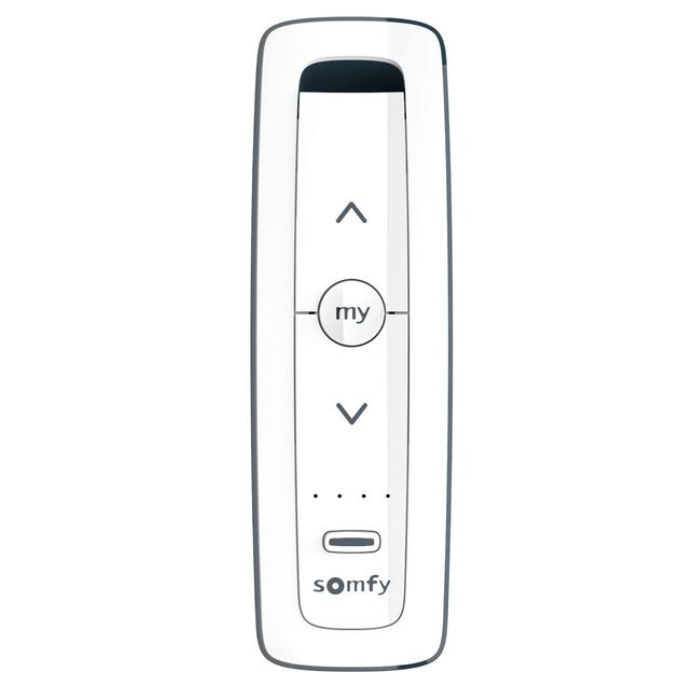Please wait...
Unlocking the Power of RTS: Your Comprehensive Guide to Radio Technology Somfy
This entry was posted 24/04/2024

In the realm of smart home technology, one acronym reigns supreme for its pivotal role in enabling seamless automation and control: RTS. Join us as we dive into the world of RTS, exploring its definition, functionality, advantages, disadvantages, and real-world applications. By the end of this guide, you'll have a clear understanding of how RTS can elevate your home into a smart, efficient, and comfortable haven.
What is RTS?
RTS, or Radio Technology Somfy, serves as the cornerstone of many smart home automation systems. Developed by Somfy, a renowned provider of motorised solutions for curtains, blinds, exterior solar screens, and awnings, RTS technology empowers homeowners to remotely control and automate various aspects of their home environment effortlessly.
RTS relies on radio frequency signals to facilitate communication among different devices within a smart home system. Unlike conventional wired systems, RTS offers unparalleled flexibility and convenience, making it a top choice for modern homeowners seeking to embrace the benefits of home automation.
How RTS Works
To grasp the full potential of RTS in smart home applications, it's crucial to understand its inner workings. At its core, RTS operates on a transmitter-receiver model, where a transmitter sends commands to one or more receivers, prompting predefined actions in connected devices.
An RTS system typically comprises transmitters, receivers, and motorised devices such as blinds, shades, or awnings. Transmitters, whether handheld remotes or wall-mounted controllers, allow users to wirelessly send commands to RTS-enabled devices. Receivers, embedded within motorised devices, receive these commands and execute corresponding actions, such as adjusting blinds or extending an awning.
One of RTS's standout advantages lies in its simplicity and ease of installation. With no need for complex wiring, RTS is suitable for both new constructions and existing homes. Moreover, RTS devices seamlessly integrate with other smart home systems and protocols, enhancing interoperability and versatility.
Pros of RTS in Smart Homes
Embracing RTS technology in smart homes brings forth a myriad of benefits:
- Convenience and Ease of Use: RTS-enabled devices empower homeowners to effortlessly control and automate various aspects of their home environment with a simple touch or voice command.
- Wireless Functionality: By operating wirelessly, RTS eliminates the need for extensive wiring installations, offering greater flexibility in device placement and configuration.
- Flexibility and Customisation: With programmable schedules and automation rules, homeowners can tailor their smart home experience to suit individual preferences and lifestyle needs.
- Integration with Voice Assistants and Smartphone Apps: RTS devices seamlessly integrate with popular voice assistants and smartphone apps, enabling remote access and control from anywhere with an internet connection.
- Reliability and Security: RTS technology is renowned for its robustness and reliability, coupled with built-in security features like rolling code encryption for peace of mind.

Cons of RTS in Smart Homes
While RTS boasts numerous advantages, it's essential to consider potential drawbacks:
- Limited Range: RTS devices may face challenges in reaching devices located far from the central control hub, particularly in larger homes or buildings with thick walls.
- Potential for Interference: Like any wireless technology, RTS is susceptible to interference from other electronic devices operating on similar frequencies, potentially causing disruptions or signal degradation.
- Cost Considerations: Outfitting an entire home with RTS-enabled devices can represent a significant investment, including the cost of devices and professional installation fees.
- Compatibility Issues: While RTS boasts broad compatibility, it may encounter challenges when integrating with non-RTS systems or protocols, requiring careful consideration of compatibility requirements.
- Maintenance and Troubleshooting: RTS devices may require periodic maintenance and troubleshooting to ensure optimal performance, necessitating homeowner attention and, if needed, professional assistance.
Real-World Applications of RTS Technology
The versatility of RTS lends itself to various applications within the smart home environment:
- Motorised Blinds and Shades: RTS-enabled blinds and shades enable precise control over natural light levels and privacy settings, enhancing comfort and energy efficiency.
- Exterior Solar Screens and Awnings: RTS technology extends outdoors, allowing users to control exterior solar screens and awnings based on weather conditions, enhancing outdoor living spaces while conserving energy.
- Lighting Control: RTS-compatible lighting systems offer flexible control options, from adjusting brightness levels to creating custom lighting scenes tailored to different activities and moods.
- Climate Control: RTS integration with HVAC systems and thermostats optimises indoor comfort and energy usage by automating temperature adjustments.
- Security and Access Control: RTS-enabled devices bolster home security by integrating with door locks, security cameras, and alarm systems, providing remote monitoring and control for added peace of mind.
Future Outlook for RTS Technology
As smart home technology evolves, RTS is poised to play a pivotal role in shaping the future of home automation. Advancements in wireless communication, sensor technology, and artificial intelligence will drive RTS-enabled devices to new heights of sophistication and interconnectedness, offering unparalleled convenience, comfort, and efficiency.
Trends such as edge computing, machine learning, and the Internet of Things (IoT) will expand RTS's capabilities, enabling seamless integration with a myriad of smart devices and services. From predictive automation algorithms to personalised user experiences, the future of RTS promises to revolutionise how we interact with our homes and surroundings.
RTS technology represents a powerful tool for transforming ordinary homes into smart, efficient, and comfortable living spaces. If you're intrigued by the possibilities of RTS or have further questions, don't hesitate to reach out! We're here to help you navigate the world of smart home automation.
This entry was posted in Hints and Tips on 24/04/2024


